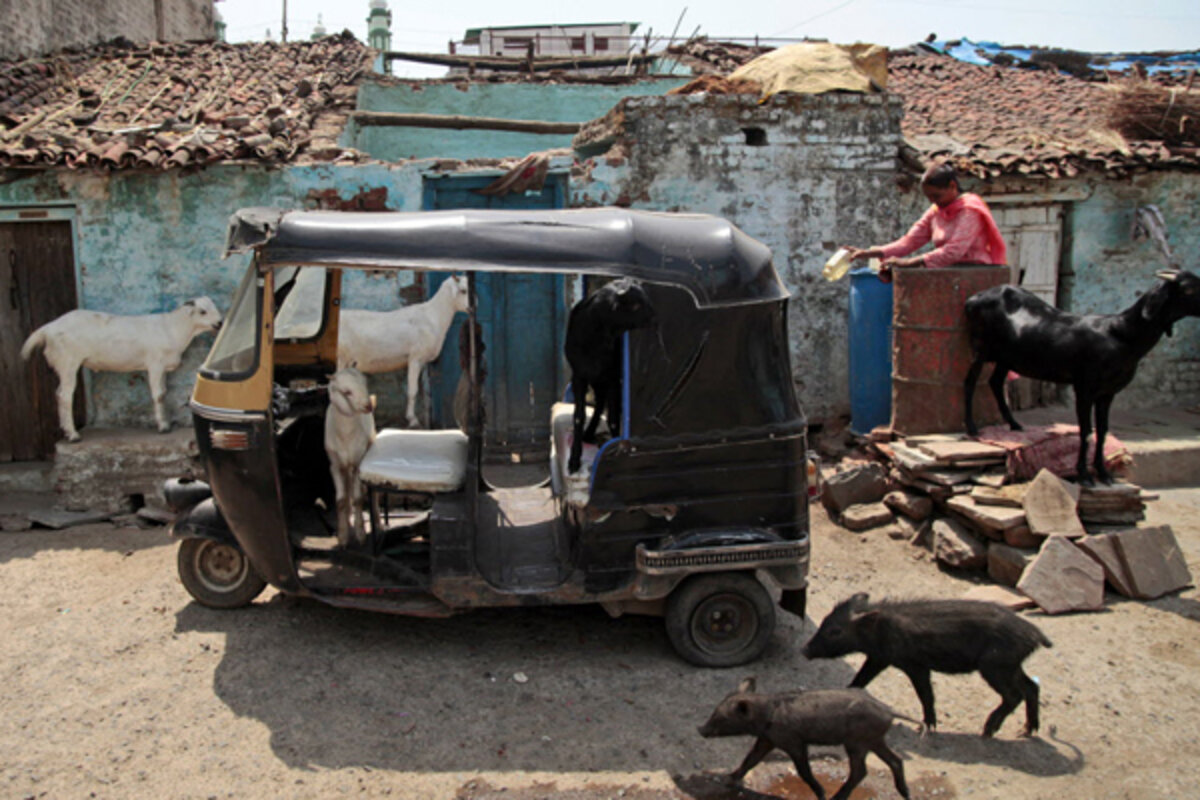Delhi tackles air pollution with more auto rickshaws
Loading...
| New Delhi
They are loud, and they dart and dodge dangerously through traffic. But India’s three-wheeled auto rickshaws are also much cleaner than cars and are part of Delhi’s new efforts to clear the air.
India has the world’s worst air pollution – even worse than China, according to a January study by researchers at Yale and Columbia universities.
To tackle the problem, Delhi’s municipal government and the country’s Supreme Court are lifting a cap on the number of rickshaw licenses in the hopes that fewer residents will resort to buying their own wheels.
“Commuters need to have viable options of transport other than cars,” says Akshay Mani, of the sustainable transport nonprofit EMBARQ. Mr. Mani says that by making rickshaws safer and wider ranging, the government can make them a sustainable part of the transport system.
It’s not the first time that rickshaws have been at the forefront of clean up efforts. Fifteen years ago, the Supreme Court ordered that all rickshaws in the capital use cleaner four-stroke engines and compressed natural gas rather than petrol.
But instead of building the rickshaw sector after they were refitted, an earlier 1997 Supreme Court decision capped their number at 55,000. Now, with a population of 16.7 million people, there are still 55,000 rickshaws and some 6 million cars and growing.
"Delhi has lost nearly all the gains of its CNG program," said Anumita Roychowdhury, executive director of research at the Delhi-based Center for Science and Environment. “Because of the growing dependence on cars and poor rickshaw and public transport systems.”
More cars
The use of bus and autos are growing at a rate of 7 percent and 5 percent, while private car and motorbike trips are moving ahead at a rate of 12 percent and 15 percent.
The lack of availability of rickshaws is a contributing factor leading many Delhi dwellers to buy cars, which are a status symbol for the growing middle class as much as a mode of transport. Delhi, home to just 1.4 percent of India’s population, now has 11 percent of the nation’s private vehicles.
To discourage car use and boost rickshaw use, tax policies also need to change, says Mani. “People who choose to drive a car should pay higher taxes and parking fees,” he says. Instead, the government heavily subsidizes diesel fuel, leading citizens to opt for cars that run on one of the dirtiest fuels.
In 2000, diesel cars accounted for just 4 percent of India's market. They now make up 40 percent of new car sales, and are soon expected to hit 50 percent.
Part of the solution
Entrepreneurs like Sulabh Mehra and his pioneering business are an essential part of the solution.
Mr. Mehra started an auto-rickshaw company in Delhi’s sprawling suburb of Gurgaon two years ago, offering a dial-up service only supplied previously by full taxis. Instead of flagging rickshaws on the street, commuters can dial direct for a rickshaw ride.
“Commuting is a major issue in Gurgaon,” says Mehra. “We service the last mile connectivity from your home to public transportation. For longer distances, pre-arranged autos can cut back on cab use.”
In two years, his fleet has grown from 50 to 100, transporting about 1,000 people a day in the suburb of over 1.5 million. Similar models have popped up across India.
In November, the Supreme Court lifted its cap and is allowing 45,000 more rickshaws in Delhi “to cater to the ever-growing demand,” says the city’s head transport secretary, R. Chandramoihan. Experts have welcomed the shift in policy and intention, saying it can’t come soon enough.
“Investment in an improved transport sector has been much slower in Delhi,” says Ms. Roychowdhury. “Delhi has been car-centric with a phenomenal expansion in bridges and highways.”
Give up a car?
Still, getting people who have already bought into a car culture to give up their cars in favor of bumpy, open-air rickshaws won’t be easy. About 1,200 new cars hit the streets of the capital each day.
“Why would I want to take an auto when it is a huge hassle?” says Preethi Bansal. Her family is part of India’s booming middle class. They live about a mile from the Delhi metro but have four cars for their family of five.
And thanks to a deep culture of corruption, drivers often pay thousands of rupees for a Delhi rickshaw permit on the black market, and five times the usual cost for the actual rickshaw vehicle. This often translates into higher fares for commuters.
“I don’t see any change happening,” says Rakesh Agarwal, head of the Nyaya Boomi nonprofit working to promote rickshaw drivers rights.
“There is a mafia that runs the rickshaw business in Delhi and they are not likely to let this happen.”




